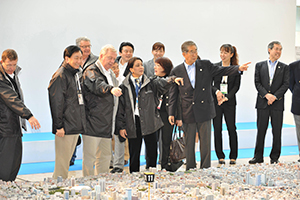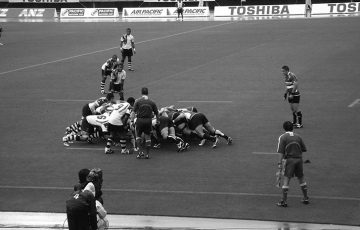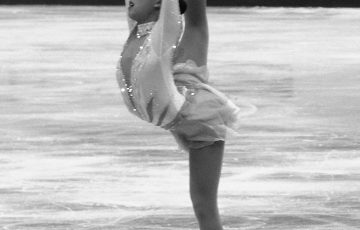 The Olympic Games, or specifically the Ancient Olympics or Olympiad as it’s sometimes known, dates back to 776 BC and although it’s exact origins are still a question of some debate it is widely believed that the primeval games which involved a fusion of artistic competition, festival and pageantry, actually derived from Greek Mythology with the ultimate goal being to pay homage and to appease the avatars on high.
The Olympic Games, or specifically the Ancient Olympics or Olympiad as it’s sometimes known, dates back to 776 BC and although it’s exact origins are still a question of some debate it is widely believed that the primeval games which involved a fusion of artistic competition, festival and pageantry, actually derived from Greek Mythology with the ultimate goal being to pay homage and to appease the avatars on high.
Millennia later and the games have evolved into one of the world’s biggest, most expensive and widely viewed sporting spectacles today, with no better testament to this than the XXIV Olympic Games which was held in 2008 in Beijing with no expense spared on infrastructure, promotion and unimaginable pomp and ceremony – the latter of which the UK may well be hard pushed to follow when the Olympic Torch arrives in London in 2012.
Olympism
The founding principle behind the Modern Olympics is a tenet known as ‘Olympism’ meaning ‘the Olympic Spirit’. The father of the Modern Olympics, French pedagogue Baron Pierre de Coubertin proposed to an audience at an international congress held in Paris in 1894 that such a spirit would not only encourage the development of physically and mentally well-balanced individuals, but would also go a long way to promote mutual understanding and peace throughout the world. According to Coubertin: “Olympism is a philosophy of life, exalting and combining in a balance, the qualities of body, will and mind. Blending sport with culture and education, Olympism seeks to create a way of life based on the joy found in effort, the educational value of good example and respect for universal fundamental ethical principles.”
The ubiquitous symbol of the Olympics, the five inter-linked rings was also Baron Pierre de Coubertin’s conception, with each ring representing the solidarity and accord of each continent in the world. His proposal was accepted and an executive committee to oversee the governance of the Olympics was formed and came to be known as the International Olympic Committee (IOC). The committee exists to this day and is guided by and committed to advancing the principle and philosophy of Olympism.
Today, the IOC works alongside a number of other governing bodies to comprise the Olympic Movement, these organizations are: Organizing Committees of the Olympic Games (OCOGs); the National Olympic Committees (NOCs); the International Federation (IFs); national and international sports associations, clubs and of course the athletes themselves.
Perhaps the IOCs most visible role is to elect the Host City and establish the candidature and election process. The choice of the Host City is the prerogative of the IOC Session (the general assembly of the IOC members) and it is the IOC Executive Board that determines the procedure to be followed until the election by the Session. This election is held seven years before the Olympic Games and that time is right now. Literally.
Deep Green Pockets
The Host City for The 2016 Summer Olympics, officially known as the Games of the XXXI Olympiad, will be announced at the 121st IOC Session to be held in Copenhagen, Denmark, on October 2, 2009. Tokyo, Chicago, Madrid and Rio de Janeiro are the four cities shortlisted to host the games and whilst each city has presented strong arguments to host the Games, Tokyo may well have edged it.
Nawal El Moutawakel, head of the IOC evaluation team described Tokyo as a “dynamic city” and went on to add during the IOC inspectors four-day visit to Japan’s capital in April, “We are most impressed with what Tokyo could offer the Olympics and also with Tokyo’s excellent and highly professional presentation.”
Against a backdrop of global economic woes and concerns she was particularly impressed at the assurances given to her regarding the cities fiscal prowess, as she explained. “We have been given all kinds of financial guarantees to secure the budget, we’ve also been given the full support of the Prime Minister and the Japanese government in case of any shortfall.”
However, with Tokyo’s contingency fund for the Games amounting to a staggering 400 billion yen and the Japanese central government and the Tokyo Metropolitan Government both pledging to underwrite the entire cost of the games in accordance with Japanese law, financial shortfalls aren’t likely to be an issue.
This has left Tokyo’s bid leaders confident that their nation’s capital is the best placed city to host a debt-free Olympics seven years from now, the other three candidate cities perhaps can’t match such pecuniary savoir faire.
Finances aside, Moutawakel was also very impressed by the environmentally friendly aspects of Tokyo’s bid and commented, “The environment is one of the 17 themes we evaluate and we’ve been impressed with the idea of [Tokyo] putting the whole Games in an eight-kilometer radius, that will make it easy for the athletes and for all the Game stake-holders.”
Tokyo’s development-plans to host the Games have ecology and the environment front and center and the bidding committee are confident that Japan has the financial clout and technology to deliver what they describe will be “the most compact and efficient Olympic Games ever.” The city will look to radically redevelop land reclaimed from Tokyo Bay, which would provide the games with a dramatic waterfront setting and will revitalize neglected land in a similar vein to 2012 hosts London and the city of Barcelona in the past.
The proposed ‘Yumenoshima landfill’ will span 88,000 square meters in Tokyo Bay with the islet made entirely from compost from fallen leaves and twigs gathered from Tokyo’s municipal parks and streets. Although essentially an island made from trash, this man-made marvel will be transformed into a lush-green, self sustainable forest with almost half a million trees planted to add the finishing leafy touch. This natural landfill has been dubbed: “Umi no Mori” or “Forest on the Sea”. This floating island will be the site of equestrian, canoeing, rowing, sailing and other staple sporting events of the Games. The new waterfront, also to be built upon reclaimed land, will offer housing complexes as well as retail and entertainment venues.
The Olympic Village has also been conceived with the environment firmly in mind – specifically with measures to reduce CO2 emissions and conserve energy. The Village will feature a plethora of eco-friendly solutions and systems ranging from the use of solar energy and other renewable energy sources and will aim for one hundred percent waste recycling which would be a world first. The Village will comprise five high-rise buildings, each one representing one of Baron Pierre de Coubertin’s Olympic Rings. Following the games the Village will be converted into private apartments and their lush green surroundings will ensure they’re not on the market long.
Been There Done That
 October 10, 1964 heralded the first Olympic Games held in Asia and fuelled host nation Japan’s rise to global economic prominence. Tokyo saw a rapid development of its postwar infrastructure, which included the monumental construction of the Metropolitan Expressway, and the Games coincided with the launch of Japan’s venerable Shinkansen (“Bullet Train”) and the Tokaido Shinkansen railway line. This preceded an era of economic growth at a pace never seen before and the rest of the world was left to marvel at Japan’s seemingly miraculous rebirth.
October 10, 1964 heralded the first Olympic Games held in Asia and fuelled host nation Japan’s rise to global economic prominence. Tokyo saw a rapid development of its postwar infrastructure, which included the monumental construction of the Metropolitan Expressway, and the Games coincided with the launch of Japan’s venerable Shinkansen (“Bullet Train”) and the Tokaido Shinkansen railway line. This preceded an era of economic growth at a pace never seen before and the rest of the world was left to marvel at Japan’s seemingly miraculous rebirth.
The Tokyo Olympic Games was a catalyst for urban growth and business and commerce quickly followed suit. However the Japanese athletes competing in these games also sparked a new era of sporting development and on the back of winning 29 Olympic medals, sports infrastructures started to take root and spread and a myriad of new clubs, leagues and organizations were established pushing sport into the forefront of Japanese culture.
Fast forward to 2016 and the predicted revenue generated from the Tokyo Olympics is somewhere in the region of a staggering US$1.557 billion and according to the Tokyo Metropolitan Government, metropolitan and national economies could see gains to the amount of US$31 billion overall, which would certainly be a shot in the arm despite the fact the country will have presumably long since have recovered from the recession anxieties of yesteryear.
In addition to the Olympic Village and The Forest on the sea, 21 of the original venues from the 1964 Olympic Games will be refurbished and are located a mere 20-minutes from the central waterfront. However the real pièce de résistance, as with all Olympic Games, will be the main stadium. The 100,000 seater stadium is to be designed by the iconic Tadao Ando in the Ariake area of the Chou ward and will purportedly boast ‘green’ technology and ingenuity currently thought impossible. Tokyo 2016 will, in theory, be the first time in Olympic history that a city has hosted the games at its very center. The city center itself will literally become the Games and following the event key facilities and locations will evolve seamlessly into the government’s 10-year plan for a cleaner, greener Tokyo nicknamed: ‘The Big Change’. In fact, if these plans come to fruition Tokyo will become the greenest city of its size in the world.
All that remains to be done is for the IOC to say “yes” to Tokyo and for an as yet unknown Japanese superstar to, in 2016, run the hundred meters in less than 9.58 seconds (the current World Record held by Jamaican Usain Bolt), or shave milliseconds off the current record at that time. We, in our adopted nation, must dare to dream, although let’s face it Tokyo getting the IOCs approval is probably the more realistic of the two. The official site of the Olympic Movement is www.olympic.org.
Story by Jon Day
From J SELECT Magazine, October 2009















Recent Comments